Articles of 2009
RIP, Lady Ali
For many boxing fans, female fighters are still an anomaly. Men are supposed to be the hunter-gatherers of the human species, and as such certain occupations have long been thought (at least by guys) as their exclusive preserve. While males go off to war as soldiers, protect our streets as cops and stain boxing rings with their blood, the ladies are supposed to stay home, bear our children, bake us cookies and, if they really need to get out of the house and earn a paycheck, serve society as nurses, secretaries, waitresses, beauticians and, oh, maybe as pole dancers.
It’s like Bette Midler complained in the lead-in to one of the songs in The Rose, 1979’s semi-fictionalized cinematic take on the short, turbulent life of Janis Joplin. “What are we, ladies?” the Divine Miss M rhetorically asked females in the audience. “We are waitresses at the banquet of life.”
Such stereotypical male attitudes, of course, have been the glass barrier women have been attacking and frequently shattering for as long as the more independent among their ranks have imagined themselves to be full and equal partners with their brothers. If you believe you can do something, having a Y chromosome shouldn’t preclude you from making it happen, which is why such contrarians as Susan B. Anthony, Annie Oakley, Babe Didrikson, Amelia Earhart, Gloria Steinem and Sally Ride have periodically stepped forward with a defiant “Yes, I can” attitude.
All of which should give us pause as we consider the life and times of Jackie Tonawanda, who was 75 when she died last Tuesday of colon cancer at Harlem’s Mount Sinai Hospital.
Tonawanda might not be the “pioneer” of women’s boxing – that designation more properly is reserved for such pugilistic predecessors as Polly Burns, Rosie Danvers, Helen Hildreth and Jeanne La Marr (and you’re excused if you never heard of any of them; neither had I until I researched the history of female fighters for this story) – but she was one of the loudest and most visible drum-beaters for the advancement of equal rights in boxing, that most unequal of professional sports.
The self-styled “Lady Ali” applied for a boxing license from the New York State Athletic Commission in October 1974 and was summarily rejected by then-NYSAC head Edwin Dooley on the grounds that to do so would “bring professional boxing into disrepute.” Which is like the pot calling the kettle black, when you get right down to it.
Undeterred by what she perceived as another chauvinistic roadblock thrown up by a man who probably considered June Cleaver – the mom in the 1950s TV series Leave It To Beaver who cheerfully vacuumed rugs and cooked dinner while wearing dresses and a pearl necklace – to be the essence of femininity, Tonawanda sought injunctive relief in the legal system, where a sympathetic judge ruled in her favor with the admonition that “this court will not hold that women should be precluded from a problem exploiting whatever skills they may have in the sport of boxing merely because they are women.”
Thus Tonawanda, along with Cathy “Cat” Davis and the aptly named “Lady Tyger” Trimiar, became the first women to be granted licenses to box by the NYSAC in 1978. But it was Tonawanda who had the distinction of becoming the first female to enter the ring in Madison Square Garden, a bit of history that forever will belong to her, just as Soviet cosmonaut Valentina Tereshkova will forever have the distinction of being the first woman to blast off into space, in 1978. Ride became the first American woman to leave the earth in 1983.
Dooley no doubt was dismayed to have been judicially forced to let the ladies into his men-only club (and you have to wonder what he’d think of the New York commission now being headed by a woman, Melvina Lathan), but he was hardly alone. When the commission reluctantly granted Tonawanda, Davis and Trimiar their licenses, former heavyweight champion and NYSAC member Floyd Patterson stood in the background, shaking his head.
“I think it’s terrible,” Patterson said. “I always respected women and have been a supporter of women’s lib. But in the boxing ring, no. I can’t stand to see women cutting each other up and spilling blood in the ring.”
In legend and lore, Tonawanda was a smooth boxer, a sort of Willie Mae Pep, with a devastating punch that qualified her as an Ernestine Shavers. Some accounts, such as the tribute story authored by New York Daily News columnist/cartoonist Bill Gallo, cited Tonawanda as having had a 35-1 record, which included 34 victories inside the distance. Gallo also noted that Tonawanda had been a “bodyguard” for Muhammad Ali at his Deer Lake, Pa., training camp. Other accounts have Tonawanda sparring with The Greatest on Sept. 2, 1976, while he was in training at the Concord Hotel in Kiamesha Lake, N.Y., although he reportedly pulled his punches to the extent that none actually landed.
“His combinations were beautiful,” said the curly-haired Tonawanda, who was 5’11” and 175 pounds during her prime. “A jet plane would (finish) second to him.” This was hardly a revelation; no doubt Cleveland “Big Cat” Williams would have said the same thing.
Perhaps Tonawanda was as dominant as self-advertised, or maybe she was just the female approximation of another larger-than-life boxing figure: Don King. Like King, she talked the talk like no other, with enough chutzpah to sell ice to Eskimos, but some insist her actual ring experience consisted of far fewer bouts than she took credit for, and that her skill-set was not nearly as impressive as she would have had listeners believe.
Nonetheless, during an era when women boxers were are rare as whooping cranes spotted in the wild, Tonawanda packaged herself as a stone killer who would have become an icon had only she been born a man. Her argument for her right to acceptance was compelling, regardless of whether her accomplishments justified the hype. Somebody has to carry the banner for gender equal rights, be it Susan B. Anthony for suffragettes or the first bra-burner during the Helen Reddy “I Am Woman” revolution in the 1970s. Tonawanda took that role upon herself, and the walls of Jericho came tumbling down.
Well, maybe not. Those walls are still standing, although they’re missing a couple of bricks. King, the quintessential hypemeister, signed Christy Martin to be his Annie Oakley, the sharpshooter who wowed audiences in Buffalo Bill Cody’s Wild West shows in the late 1800s. Martin was a featured attraction on a number of King-promoted cards and, in 1996, became the first female fighter to grace the cover of Sports Illustrated. Largely because of her popularity, women’s boxing experienced a spurt of unprecedented growth, spawning such recognizable names as Lucia Rijker, Mia St. John and celebrity daughters Laila Ali and Jacqui Frazier-Lyde. Rijker had a prominent role as Billie the “Blue Bear” in 2004’s Million Dollar Baby, which not only was a movie about women’s boxing, but won the Academy Award as Best Picture.
But the boom period of late has been stunted, and what few female fighters still get major exposure do so because they’re comely enough to give major exposure. Not for nothing was St. John, who has physical attributes that have nothing to do with how well she can hook off the jab, featured in a Playboy magazine pictorial.
You can say that Tonawanda was born too soon for that heady period in the 1990s when women fighters gained greater acceptance, but face it: She was never going to get a photo spread in Playboy. It’s all right for a male fighter these days to more closely resemble Carmen Basilio than Oscar De La Hoya, but the path to recognition for their female counterparts remains an express lane only if the faces out front are prettied up with mascara and rouge. A firm bosom and well-turned leg are also marketable assets. Until more bricks are knocked from that figurative wall, sex appeal always will be a major component in male acceptance of women’s boxing.
The mere fact that this story is being posted a week after Tonawanda left this mortal coil suggests that female fighters are still in the middle rounds of a long, tough and interminable fight. But then boxing had bigger fish to fry this past week than to note the passing of an old woman whose exploits remain a matter of conjecture. We were distracted by the International Boxing Hall of Fame induction of Lennox Lewis, Orlando Canizales and Brian Mitchell, the welterweight title fight in Madison Square Garden between Miguel Cotto and Joshua Clottey, the 84th annual Boxing Writers Association of America Awards Dinner which was attended by 2008 Fighter of the Year Manny Pacquiao, the announcement of the postponement of Floyd Mayweather’s comeback bout against Juan Manuel Marquez. Once again, a woman in boxing had to take a back seat, or more precisely a reclining position in a coffin.
Christy Martin spent the weekend in Canastota, N.Y., where she attended the IBHOF induction festivities for the 14th consecutive year. She knows first-hand that fans were there to praise Lewis, Canizales, Mitchell and the returning Hall of Famers, not to bury Tonawanda.
Nor is Martin herself inclined to shower praise on the departed Jackie, perhaps because Tonawanda made a conscious effort to belittle Martin when she began to rise through the ranks. Protecting one’s era is hardly a phenomenon restricted to boxing; remember how Wilt Chamberlain chided Lew Alcindor/Kareem Abdul-Jabbar as a lesser talent when the young skyhooker made it to the NBA? Kareem, in turn, now finds fault in Dwight Howard. As always, the wheel goes ’round and ’round.
Perhaps Martin, who goes there every year anyway, will become the first female fighter to be invited to Canastota in an official capacity, joining promoter Aileen Eaton in the Hall’s highly exclusive ladies’ club. It all depends on how many more bricks can be knocked from that wall of resistance.
“I never knew her,” Martin said of Tonawanda during a phone call from the central New York hamlet that has become to boxing what Cooperstown, N.Y., a mere hour’s drive away, is to baseball. “I never saw her fight. Obviously, she must have loved the sport of boxing. I give her credit for that.”
Of the putdowns Tonawanda hurled at her, Martin wonders why another female fighter felt the need to go after another in such a manner.
“I never said I was the pioneer,” Martin said. “I never said that. I just wanted to fit in.”
Tonawanda always was something of a round piece trying to wedge herself into a square hole, which might have accounted for her obstinance. But no one can say she didn’t go down fighting.
-
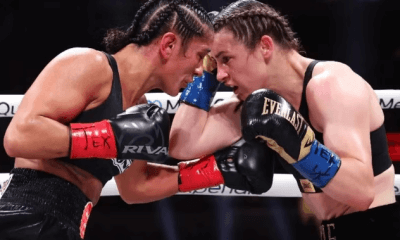
 Featured Articles3 weeks ago
Featured Articles3 weeks agoResults and Recaps from New York Where Taylor Edged Serrano Once Again
-

 Featured Articles1 week ago
Featured Articles1 week agoThe Hauser Report: Zayas-Garcia, Pacquiao, Usyk, and the NYSAC
-

 Featured Articles2 days ago
Featured Articles2 days agoOscar Duarte and Regis Prograis Prevail on an Action-Packed Fight Card in Chicago
-
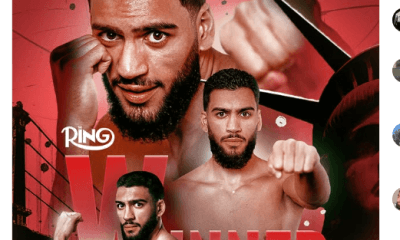
 Featured Articles3 weeks ago
Featured Articles3 weeks agoResults and Recaps from NYC where Hamzah Sheeraz was Spectacular
-
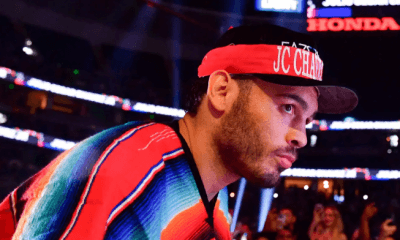
 Featured Articles4 weeks ago
Featured Articles4 weeks agoFrom a Sympathetic Figure to a Pariah: The Travails of Julio Cesar Chavez Jr
-
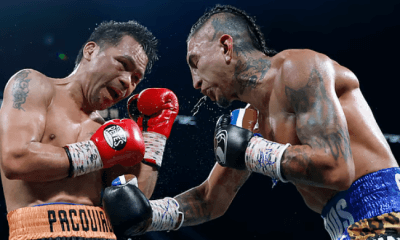
 Featured Articles2 weeks ago
Featured Articles2 weeks agoManny Pacquiao and Mario Barrios Fight to a Draw; Fundora stops Tim Tszyu
-
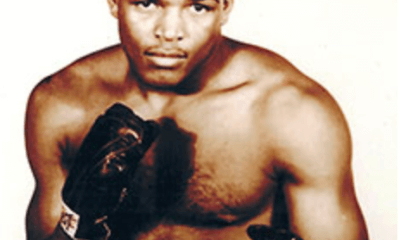
 Featured Articles3 weeks ago
Featured Articles3 weeks agoPhiladelphia Welterweight Gil Turner, a Phenom, Now Rests in an Unmarked Grave
-
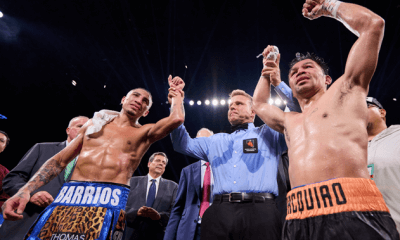
 Featured Articles2 weeks ago
Featured Articles2 weeks agoArne’s Almanac: Pacquiao-Barrios Redux
















